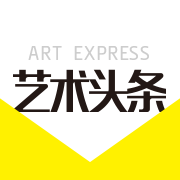
Traditional Brush Painting Continues
2008-12-31 10:14:47 未知
Moraga artist and teacher Joan Yao had never exhibited her art before her month-long December showing at the Moraga Public Library.
She exhibited only 13 pieces of her artwork there — traditional Chinese brush paintings and calligraphy — which Yao's husband T.C. says is a reflection of his wife's interest in the art and not the commercialism.
Starting this month, Yao will exhibit several dozen of her brush paintings in another month-long showing at the Orinda Library on Orinda Way. The Shanghai-born artist says this, her largest showing ever, is part of her effort to keep alive a Chinese tradition that she said could easily be lost on the next generation.
"This is foreign land to me," Yao said. "I feel my calling is to show Chinese culture and tradition art to people."
Yao began honing her craft first in calligraphy, as a young girl in China. She came to the U.S. in 1980 and built a life with her husband and their son, Andrew.
Traditional Chinese brush painters, she says, use techniques and principles not part of Western art.
In Eastern art, for example, painters are conservative when using canvas space. The "negative," or blank, space on the canvas is just as important as the strokes and colors. Each stroke in brush painting, Yao says, is painted once; artists tend not to go over strokes.
Yao does not paint from photos or models — the most distinguishing difference, she says, between Western
and Eastern art. Instead, she tries capturing the spirit of what is being painted. She often instructs her students to first study their subject and then paint from their feelings.
"When we paint, we believe less is more," said Yao, who favors painting scenes of nature.
At her home studio, a large framed piece features what Yao called "the most famous mountain in China" — Yellow Mountain, when translated into English. The mountain was named for a gold-wearing emperor who frequented the mountainous range, reflecting yellow onto the fog-pillowed peaks.
Yao depicts the range with hints of blues and light reds. Trees protrude from indiscriminate locations on the mountain and fog clouds float just above.
This piece and several others, all on various sizes of canvas, will show the technique Yao learned from Chinese brush painting master Chang Dai-Chien. His granddaughter, D.V. Xiao of Pebble Beach, is Yao's longtime teacher and is expected to attend her student's gallery reception on Jan. 4.
"He's my idol," Yao said of her teacher's grandfather. "Right now, (Xiao) couldn't do what her heart wanted to do" — paint the way her father did. Xiao teaches the Chinese language in Pebble Beach. "She was very happy I could keep her family tradition going."
Yao has been teaching brush painting at the Contra Costa Chinese School at Diablo Valley College for nine years. Her students, all from various backgrounds, have learned to "paint a painting that bring out the tranquility in nature."
"They are all really falling in love with brush painting," Yao said. Some of her students have gone on to win art competitions under her instruction.
Fourteen-year-old Jonathan Shum of Piedmont won the top prize in an under-18 category at the Northern California Chinese Brush Painting competition. Shum has studied with Yao since he was 9 and said her instruction is nurturing to novice painters.
"She guides kids by their own pace," Shum said. "She allows an artist to go his own way."
For Shum, Chinese brush painting was just a once a week hobby.
"It still is a hobby, but I just enjoy it," Shun said.
The Orinda Arts Council, which coordinates art showings in the library gallery, accepts the requests for exhibitions and "turns down very few people," according past president of the council Myrna Lloyd.
Yao's art will be on exhibit for a month and can also be purchased. The council, Lloyd said, takes no percentage of the profits.
(责任编辑:李丹丹)
注:本站上发表的所有内容,均为原作者的观点,不代表雅昌艺术网的立场,也不代表雅昌艺术网的价值判断。

 高孝午作品被盗版至110多国 首次发起全球维权
高孝午作品被盗版至110多国 首次发起全球维权 雅昌指数 | 月度(2025年7月)策展人影响力榜单
雅昌指数 | 月度(2025年7月)策展人影响力榜单 对话 | “道法自然” 范一夫山水中的破界与归真
对话 | “道法自然” 范一夫山水中的破界与归真 对话 | 在开放和自由中确立艺术价值
对话 | 在开放和自由中确立艺术价值
全部评论 (0)